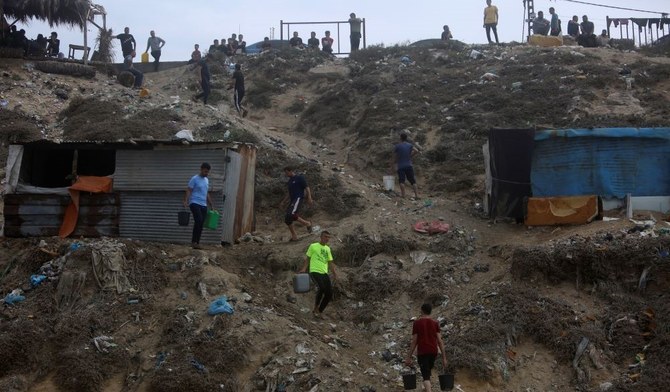
- ARAB NEWS
- 12 Jul 2025

In 2001, during Kofi Annan’s tenure as secretary-general of the UN, Nov. 6 was declared to be the International Day for Preventing the Exploitation of the Environment in War and Armed Conflict by the UN General Assembly. As this important date passed again this week, it is necessary to examine the impact that wars have on our endangered planet.
Wars destroy humanity and inflict unimaginable damage and pain on people, particularly children and the most vulnerable. But there are also other victims of armed conflicts, including the environment and other forms of life on our planet.
Firstly, heavy modern military vehicles, particularly those deployed by air forces, rely on a large quantity of petroleum to operate. The US Department of Defense is reportedly considered to be the single largest consumer of such fuel across the world.
The use of these heavy military vehicles in wars causes high levels of carbon dioxide emissions, in addition to nitrogen oxides, sulfur dioxide, hydrocarbons and carbon monoxide. In fact, some of the largest militaries in the world produce more carbon dioxide than entire nations — for example, the US military is thought to emit more than Denmark or Portugal.
Carbon dioxide emissions are the primary driving force behind climate change and global warming. It is important to point out that climate change does not recognize borders and one country’s militaristic policies and actions can affect not only the country it is waging war on, but other nations too. Unfortunately, developing countries and communities with lower socioeconomic classes, older people, women and children disproportionately experience the impacts of losses and damages caused by global warming.
Secondly, wars can disrupt water systems, creating a significant impact not only on the environment but also on the well-being of humans and wildlife. For example, the oil from heavy military vehicles, weapons residue and attacks on water facilities can lead to the contamination of water sources. According to a report by the Watson Institute at Brown University, which studied the impact of the wars in Iraq, Afghanistan and other conflict-affected zones, “the water supply in the war zones has been contaminated by oil from military vehicles and depleted uranium from ammunition. Along with the degradation of the natural resources in these countries and a radical destruction of forest cover, the animal and bird populations have also been adversely affected.”
Intentionally disrupting or cutting off water supplies is also used as a weapon of war by some parties. Another tool employed is targeting a country’s oil infrastructure in order to deliberately pollute water supplies and impose fear. The consequences of this have become critical as the world is now increasingly facing water stress or scarcity, with demand frequently being higher than supply in some areas. Today, about one in four people globally do not have access to safe drinking water. In addition, it is alarming that the UN estimated in 2016 that half of the world’s population could be living in areas facing water scarcity by 2025. Not only does this affect humans, but it also negatively impacts the overall ecosystem.
Thirdly, wars often play a key role in the destruction of forests. For example, the enormous repercussions of the destruction that the two world wars had on forests in Europe can still be felt to this day. Trees and forests play a vital role in absorbing carbon dioxide, lowering the quantity of greenhouse gases released into the atmosphere. In other words, increases in deforestation have severe consequences for people, the environment and the planet.
Fourthly, bombs and other explosive weapons create a significant amount of debris and rubble and lead to air, land and soil pollution. The destruction of agricultural lands exacerbates food insecurity and increases starvation. This pollution of the land caused by war not only leads to soil erosion, impacting humans and their food production, but it also harms other species and can cause mass extinctions.
According to the Conflict and Environment Observatory, scorched earth techniques in wars include “the destruction of agricultural infrastructure like canals, wells and pumps and the burning of crops. Tactics like these threaten food security and livelihoods, increasing the vulnerability of rural communities.”
Armed conflicts not only destroy humanity but also create significant environmental harm.
Dr. Majid Rafizadeh
Finally, wars can cause the massive displacement of people and lead to the creation of large refugee camps. The environmental impact of such developments should be noted, as large numbers of people try to flee to neighboring countries that often do not have the necessary resources to meet their basic needs, such as water, food and sanitation.
In a nutshell, armed conflicts not only destroy humanity but also create significant environmental harm. The environmental damage caused by wars include the contamination of water, soil and air, the harming of wildlife and biodiversity, and the release of greenhouse gases into the atmosphere. They also negatively affect the ecosystems of the world by depleting resources and causing a rise in the rate of deforestation, along with the degradation of agricultural and natural landscapes. It is critical for us to reassert and reaffirm our duty and commitment when it comes to protecting our planet.